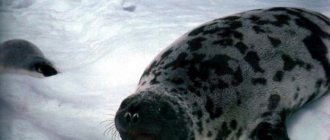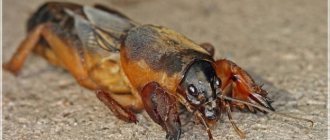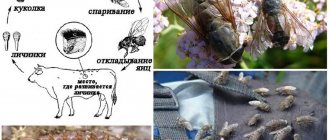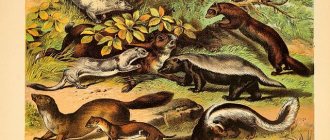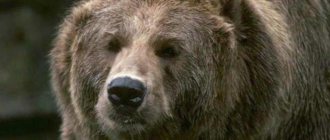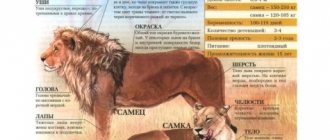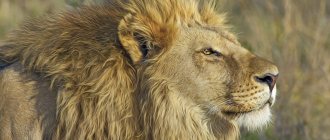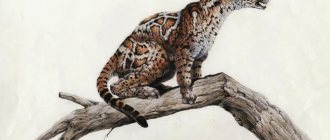The common antlion is an amazing creature, about whose existence many books and scientific papers have been written. Judge for yourself which of the insects manages to lead a more active and eventful life as a larva than as an adult? It is thanks to their inventive larva that these insects received such an unusual name. Want to know more? Then read this article.
What does an antlion look like?
Insects from the antlion family belong to the order Netoptera. These are quite large graceful creatures with a long (2-7.5 centimeters) body and two pairs of mesh transparent wings, the span of which reaches 55-80 mm. Despite some similarities, antlions are easily distinguished from dragonflies by their long antennae and slow, zigzag flight pattern. In addition, these insects can, like moths, fold their wings on their backs. Males differ from females in their larger size, the width of their wings and some other characteristics. The head of representatives of this family is set vertically. The club-shaped antennae of the insect become slightly thicker towards the end or end in a head. The antlion larva resembles a mite. It is wingless, teardrop-shaped, and equipped with large sickle-shaped and jagged jaws that mark it as a ruthless predator. The head of the larva is flat, the antennae are not visible on it.
Description
The body length of the larvae is about 12 mm. It is wide and massive, with a developed torso and abdominal cavity. The head is small and strongly flattened, with simple black eyes and large curved mandibles equipped with teeth and hairs.
The legs are very small, but movable, easily moving back and forth. The color is sandy or yellowish-brown and serves as an excellent camouflage.
The body length of the imago is about 35 mm, and the wingspan is up to 80 mm. The head is relatively small, with round shiny eyes set on its sides. On top of them are sensitive antennae, thickened in the upper part in the form of a thin club. The pronotum is black, with two yellowish spots, which are often connected to each other. The wings are transparent and permeated with a dense network of brown-black veins.
The lifespan of an adult common antlion is about one month.
Where does the antlion live?
There are approximately 2,500 species in the antlion family. Most of them prefer warmth, so they are found mainly in areas with tropical and subtropical climates. In the post-Soviet space, these insects can be found in the Crimea, the Caucasus and Central Asia.
In Russia, antlions are found in the Leningrad region. Most often they are found on the coasts of the Gulf of Finland and Lake Ladoga, and also live within the boundaries of St. Petersburg. These insects prefer to live next to representatives of a similar species, in open sandy areas with a warm climate. Antlions also live in steppe zones in southern Russia.
Literature
- Zakharenko A.V., Krivokhatsky V.A. 1993. Reticulates (Neuroptera) of the European part of the former USSR. News of the Kharkov Entomological Society. 1(2), 34–83.
- Krivokhatsky V. A. 2011. Antlions (Neuroptera: Myrmeleontidae) of Russia. St. Petersburg – M.: Partnership of Scientific Publications KMK, 1–334.
- Krivokhatsky V.A., Zakharenko A.V. Antlions of the genera Euroleon and Kirghizoleon (Neuroptera, Myrmeleontidae) of the Palaearctic // Entomological Review, 1994, T.123, issue 3, pp. 690-699
- Kovrigina A.M. Reticulates (Neuropteroidea) of the Middle Volga region // Entomological Review, 1978, T.57, issue 4, pp. 746-751
- Puzanova-Malysheva E.V. Antlions and their hunting funnels // Tr. Institute of Evol., Phys. and patol. VND named after academician. I.P. Pavlova. 1947, T.1, pp. 259-284
- Key to insects of the Russian Far East. T.IV, part 1. Under general ed. P.A. Lera. St. Petersburg: Nauka, 1995. – 606 p.
- Key to insects of the European part of the USSR. T.IV, part 6. Bigwings, camels, lacewings, scorpion flies, caddis flies. L.: Nauka, 1987.
- Botz, Jason T.; Loudon, Catherine; Barger, J. Bradley; Olafsen, Jeffrey S. & Steeples, Don W. (2003): Effects of slope and particle size on ant locomotion: Implications for choice of substrate by antlions. Journal of the Kansas Entomological Society 76
(3):426–435 - Spahn, Mark & Hadamitzky, Wolfgang (2003): The Kanji Dictionary
. Tuttle. ISBN 0-8048-2058-9 - Swanson, Mark (2007): The Antlion Pit – . Retrieved 2008-MAY-04.
Why is the antlion called that?
From the description of the appearance of the reticulate creatures, it is difficult to understand why they received such a strange name. Indeed, what does “lion” have to do with it, especially “ant”? It turns out that the representatives of this family owe their name to the habits of their larvae. If adult antlions are graceful and harmless creatures, then their formidable larvae are an example of cunning and predatory tendencies. The entire lifestyle of antlions in the first two to three years of existence is aimed at growth and development, so the larvae of these creatures mercilessly hunt other small insects, lure them into a trap and drink their vital juices. Since the prey of the larvae most often are ants, which, once caught in a trap, can no longer escape from the powerful mandibles of the voracious predators, the reticulate insect was nicknamed the “antlion.”
Lifestyle
Of all the stages of antlion development, its larvae are the most dangerous to surrounding insects. Many species make special funnels that can reach sizes up to 8 centimeters with a depth of about 5 centimeters. They serve as traps for potential victims. Some species of antlions do not build traps, but simply hunt openly. An adult does not cause any harm, and they can be beneficial for summer residents who have been tormented by ants on their property. Fauna lovers can keep insects at home in insectariums.
The antlion larva hunts by slightly extending its jaws on the surface of the sand funnel. The bristly body is perfectly attached to the bottom of the hole. These insects do not have any special preferences in food, so it is a mistake to think that the ant is its main food. It likes any insect that falls into the funnel and is held by the strong jaws of the larva.
With the help of a special digestive juice sent into the victim’s body through a channel passing inside the jaw, the antlion paralyzes the captured insect. The predator throws the thoroughly sucked skeleton out of the funnel onto the surface.
Antlion
Antlion
is an unusual insect that belongs to the lacewing family. There are about 2500 species. They have some similarities with lacewings, but if you look closely, you can notice characteristic differences. The antlion has antennae, at the tips of which thickenings are visible, in addition, the flight maneuver itself is slower and zigzag. These insects also have transparent or spotted wings, the span of which ranges from 55 to 80 mm. On the wings you can see a dense network of veins. The body length of an antlion can reach up to 8 cm. Because of this size, it is considered the most dangerous predator among the insect world.
This family of lacewings received the name “antlion” due to the lifestyle of their larvae. Their unusualness lies in the fact that adult antlions look more beautiful and harmless than their larvae, which resemble. They develop in about 2-3 years. They usually live in sandy soils, creating a kind of funnel for themselves at the bottom. For the most part, they hunt, insidiously luring them into their trap. The insect buries itself in the sand, with only its jaws exposed. Once caught in the jaws of such voracious predators, ants and small insects have virtually no chance of survival.
It will take several years for the larva to develop into an adult. Therefore, in order to survive until full maturity, the larvae are securely hidden under sandy soil protected by overhanging stones.
As it goes through stages of development, a fully formed caterpillar can change its skin a couple of times. In the third year, the larva pupates, transforming into a cocoon of cobwebs.
Somewhere after a month, the pupa becomes an adult winged antlion. Trying to crawl out, the insect gnaws a hole in the web cocoon with its jaws. The emergence from the pupa occurs underground, after which the antlion will need to climb to the surface. And until his wings and body become stronger, he is in a hanging position, clinging to the nearest plant.
Most antlion species live in the tropics. They can also be found in some countries of Central Asia and Europe, the Caucasus and Crimea.
Lion's hunt for ants
On roadsides or sandy beaches you can see craters with a diameter of 5-15 centimeters. This depression is the home and trapping pit of the antlion. The larvae of these creatures choose their home away from rain and wind, in sunny and dry places, so that the sandy edges of the funnel easily crumble under the weight of other insects. Predators dig their homes with energetic contractions of the end of the abdomen, and throw away grains of sand falling from above with sharp movements of their heads. Interestingly, the size of the funnel dug depends on the appetite of the larva. Having finished their work, these unique creatures burrow deeper into the sand so that only their powerful jaws stick out. As soon as the running ant begins to roll into the prepared hole, the larva leaves its shelter. If the victim tries to get out, the antlion begins to throw sand at it until the insect ends up at the bottom of the prepared trap. Then the larva plunges its huge jaws into it. The antlion can also prey on other insects, sometimes significantly larger in size. But the sharp jaws of the larva bite tightly into the prey, and the forward-directed bristles on the predator’s body, like an anchor, cling to the ground. A victim caught in a deadly trap is doomed to become food for a clever hunter.
Behavior
During the day, adults rest with folded wings in secluded places, on stumps and tree branches. They are very difficult to notice due to their nondescript appearance. They begin to be active at dusk.
Adults fly low and heavily, mainly along the edges of forests, gardens, parks and other green spaces. Very often they sit on plants and rest, getting tired during the flight. They become most active and visible at night. Like larvae, adults are convinced predators
They readily eat a variety of small insects, paying special attention to aphids, small flies and caterpillars.
During the mating season, antlions acquire a brutal appetite. Hungry females after mating often eat their lovers, as well as other males who happen to be near her. This way they acquire additional protein, which is necessary for laying eggs.
She makes a small hole in the lower part of her abdomen and, trembling her wings, lowers one egg into it using the ovipositor. Then she flies to another place and repeats the procedure.
The hatched larvae independently dig funnel-shaped holes, reaching up to 5 cm in depth and up to 8 cm in diameter. Their size largely depends on the size of the larva itself and the looseness of the soil. The young predator hides almost completely in its shelter, with only its wide-open jaws exposed above the surface. They blend into the sand and are completely invisible to the future victim.
When building a funnel, the larva, like a crayfish, moves backwards and quickly burrows into soft soil. Then, after a few minutes of rest, she crawls out, pushing grains of sand in all directions and using powerful movements of her head. Then she comes back, spinning in a circle.
It turns out something similar to spiral-shaped channels with a fixed center. At the end of the construction work, the larva sharply goes deeper into the sand, turning the spirals into a funnel.
Antlions are not territorial animals. Many hunters can peacefully settle nearby, reasonably believing that there is enough prey for everyone.
Digestion of food
Why doesn’t an insect caught at the bottom of a hole resist for a long time? It turns out that the larvae's jaws are equipped with special grooves that contain toxic digestive juice. Injected into the victim's body, it first paralyzes her and then begins to digest her insides. The tissues of the killed insect gradually become liquid, and the antlion larva simply drinks them, throwing out a useless chitinous shell. This process of digestion is called external. It is surprising that the larva does not excrete; its hind and midguts do not communicate with each other. Only adult insects are able to remove food breakdown products from the intestines that have accumulated there over previous years of existence.
Creating a cocoon
The antlion is an insect that eventually develops from a larva into a winged creature resembling a dragonfly. This process takes quite a long time. During the period of its existence, the antlion larva manages to overwinter twice. To do this, she buries herself deep in the sand and falls asleep.
In the third year, the larva turns into a pupa. To do this, she fastens individual grains of sand with thin silky threads, surrounding herself with a dense cradle. Interestingly, the process of creating a cocoon in these insects differs from the creation of a similar structure in other creatures. If butterfly caterpillars and sawfly larvae use spinning glands to create cobwebs, then the threads created by the predatory antlion larva are the result of secretions of the Malpighian vessels located in the hindgut of the insect.
Reproduction
After the end of the breeding season, the female antlion again manages to lay eggs, after which she dies. However, males face the same fate as females.
Thus, all these degenerations are continuously repeated: larva, pupa, mature individual and again the next clutch of eggs. This life cycle is typical for most insects, because this is how nature works.
Now you know what is remarkable about the antlion. If you liked this article, share it on social networks.
If you generally like interesting facts about everything, subscribe to the website Interesnye Fakty.org . It's always interesting with us!
Did you like the post? Press any button:
- Sea lion photo
Top
The genus Myrmeleon is considered the most famous in this family. There are 2000 species in this genus. Antlions' habitats are hot, sandy areas all over the planet. Some species of these insects can be found in temperate climates.
Antlion (Myrmeleontidae).
Life of an adult
The second half of summer is the time when the antlion, large and clumsy, finally gets out of the cocoon. During the day it sits motionless in the thickets of foliage, and at night and in the evening it flies slowly among the grass and trees. What does an antlion eat when it is sexually mature? Adults of this family live only a few weeks and eat practically nothing. They exist due to substances accumulated by the larva. An adult antlion's snack is sometimes pollen, but the main purpose of these creatures is to reproduce. Females of this family lay eggs in dry sand. After some time, new predatory larvae emerge from them.
Behavior
During the day, adults rest with folded wings in secluded places, on stumps and tree branches. They are very difficult to notice due to their nondescript appearance. They begin to be active at dusk.
Adults fly low and heavily, mainly along the edges of forests, gardens, parks and other green spaces. Very often they sit on plants and rest, getting tired during the flight. They become most active and visible at night.
Like larvae, adults are convinced predators
They readily eat a variety of small insects, paying special attention to aphids, small flies and caterpillars.
Security
Antlions need protection. According to the research and observations of scientist V.A. Krivokhatsky, no one has yet managed to breed these unusual creatures in artificially created conditions. And the spread of antlions in nature is hampered by human activity, which is actively developing their natural habitats. People are increasingly adapting sand dunes and beaches for their own homes and recreation. In forests growing on sandy soils, fires occur that destroy representatives of the antlion family. The creation of firebreaks in pine forests growing on sand and the restriction of human activity in regions suitable for the existence of antlions are the main conditions for the conservation of this unique species of insects. The antlion is included in the regional Red Books of Karelia, Tatarstan and Tver region.
Classification
The closest modern relatives of antlions are considered to be Ascalaphus. Of the closely extinct groups known only from fossils, Babinskaiidae should be noted. These three clades are usually grouped into the superfamily Myrmeleontoidea.
Most genera and species of antlions are usually grouped into subfamilies. However, there are several genera (mostly fossils) that have not been assigned to any subfamily due to the uncertainty of their taxonomic position or their identification as basal members of the family. The classification of fossil antlions as a separate family Palaeoleontidae has not been applied in recent times.
The following is a list of subfamilies, indicating notable genera and species:
- Dendroleontinae Bankisus
Navas, 1912 - Dendroleon
(fossil)
- Euroleon
Esben-Petersen, 1918
Banks, 1913
)
Genera of antlions with unclear taxonomic position:
- Palaeooleon
(fossil) - Samsonileon
(fossil)
Antlions in culture
In the southern United States, there is a belief that an antlion larva can be lured out of its hole with a special spell. The same legends were recorded among the peoples of Australia, China, Africa and the Caribbean.
The early Christian didactic book “The Physiologist” contains a description of the mythological antlion. The work publishes the concepts of Christian morality in accordance with the properties of legendary animals. The antlion is described in it as a hybrid of two incompatible creatures - a lion and an ant. This mythological creature is doomed to starvation due to its hybrid physiology: it cannot eat plants like an ant and devour meat like a carnivorous lion.
In Japanese art, kusudama "antlion" is an elegant spherical piece of paper. This craft probably got its name due to the poetic sound of incompatible words. The art of kusudama is reminiscent of origami, but differs significantly from it in the way it creates paper models.
Antlion at home
You can keep the antlion at home. To do this, pour a layer of sand approximately 5 cm high into an open container. One insect requires a separate depression 8-10 cm in diameter. Antlions can be fed ants, crickets and fruit flies. To prevent live food from getting out, it is better to lubricate the walls of the container with Vaseline. After the larva turns into a pupa, it is better to cover the container with a thin net so that the antlion does not fly away, and stick a stick into the sand so that the insect sits on it until the wings are completely straightened. The day after the antlion emerges from the cocoon, it is better to release it from the container, otherwise it will die. Observing the habits of this animal will be interesting and educational not only for children, but also for adults.
Reproduction
The lifespan of an adult insect is very short.
At the end of the breeding season, the female, having laid eggs, dies. Having given birth to a new generation of antlions, the males also die. But the development cycle of these insects repeats itself again: larva, pupa, adult and again laying eggs. This life cycle is typical for many insects; it was established by nature many millions of years ago.
- Liliger
If you find an error, please select a piece of text and press Ctrl+Enter.
The common antlion is an amazing creature, about whose existence many books and scientific papers have been written. Judge for yourself which of the insects manages to lead a more active and eventful life as a larva than as an adult? It is thanks to their inventive larva that these insects received such an unusual name. Want to know more? Then read this article.
